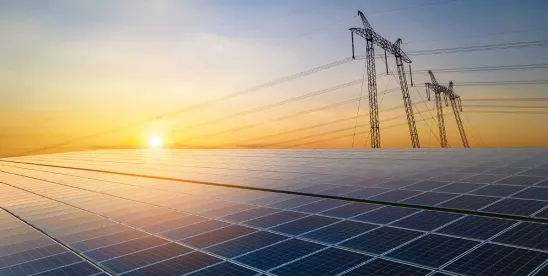The “One Big Beautiful Bill Act” — Congress’s budget reconciliation bill signed into law on July 4 — and a new Executive Order (EO) have clarified that solar and wind generation are second-class citizens in the eyes of President Trump and the Republican majority in Congress.
This week, both the budget passed by Congress and President Trump’s Executive Order on “Ending Market Distorting Subsidies for Unreliable, Foreign-Controlled Energy Sources” and the US Department of Energy’s (DOE) July Resource Adequacy Report.
We’ve outlined tradeoffs the Trump Administration has made in the energy space before, most notably about a suite of energy-focused orders issued by the Trump Administration and regarding recent DOE emergency orders in the electric space.
Budget
The budget bill contains significant changes to many areas of the law, which our colleagues will summarize shortly.
Related to clean energy, the budget seeks to sunset clean energy tax cut spending provided by the 2022 Inflation Reduction Act (IRA). (For background, see here.) Concurrent with the passage of the budget, Texas Representative Chip Roy (R-TX) noted that “ending the Green New Scam subsidies… solidified by assurances from the President” was a highlight of the budget. Highlights:
- Related to tax credits under Internal Revenue Code Sections 48E and 45Y, the budget requires wind and solar projects that begin construction after July 4, 2026, to be placed in service by December 31, 2027, to receive certain tax credits under the IRA. For purposes of Code Section 48E, energy storage projects co-located with solar and wind facilities are not subject to such beginning-of-construction and place-in-service requirements but instead have until 2032 to begin construction and, thereafter, become subject to the general phase-out of credits under Code Section 48E.
- Projects that “begin construction” prior to July 5, 2026, are not subject to the December 31, 2027, place-in-service deadline and instead may be eligible to receive tax credits under Code Sections 45Y and 48E if the project is placed in service prior to the end of the fourth calendar year after the beginning-of-construction date. This rule is subject to forthcoming Treasury guidance discussed below and may change as a result of such guidance.
- Beginning-of-construction is to be determined pursuant to rules similar to the rules under current Internal Revenue Service and Treasury guidance, but, as discussed below, the Secretary of the Treasury is required to prescribe regulations and guidance “for the prevention of… circumvention of the rules” through stockpiling of components or “other evasion” that demonstrates that “construction of a qualified facility or energy storage facility has not in fact occurred.” This guidance is expected to modify existing and long-standing Treasury guidance on “beginning of construction” rules. (See more below.)
- While transferability of tax credits was removed in early versions of the budget, the budget as passed continues to allow transferability — and monetization — so long as projects are constructed under the timeframes above.
- Solar or wind projects that were under construction by the end of 2024 avoid many of the new restrictions on IRA incentives.
- The budget imposes certain restrictions on taxpayers who receive material assistance from “prohibited foreign entities,” which may include projects that use certain Chinese components or financial supports as part of their development. Some projects that start construction before December 31 can avoid these requirements.
Executive Order
President Trump’s July 7 EO is intended to reverse prior federal efforts to “force[] American taxpayers to subsidize expensive and unreliable energy sources like wind and solar.” Wind and solar projects displace “affordable, reliable, dispatchable domestic energy sources, compromise [] our electric grid, and denigrate [] the beauty of our Nation’s natural landscape.” “Ending the massive cost of taxpayer handouts to unreliable energy sources is vital to energy dominance, national security, economic growth, and the fiscal health of the Nation.” To do this, the EO requires the following:
- Within 45 days of the budget passing, the Treasury Department is to “take all action as the Secretary of the Treasury deems necessary and appropriate to strictly enforce the termination of the clean electricity production and investment tax credits under sections 45Y and 48E of the Internal Revenue Code for wind and solar facilities,” including through issuing new guidance “consistent with applicable law to ensure that policies concerning the ‘beginning of construction’ are not circumvented.”
- And, also within the same period, to “take prompt action … consistent with applicable law” to implement the “enhanced Foreign Entity of Concern restrictions” in the budget.
- Meanwhile, the US Department of Interior is directed to “conduct a review of regulations, guidance, policies, and practices under the Department of the Interior’s jurisdiction to determine whether any provide preferential treatment to wind and solar facilities in comparison to dispatchable energy sources” and then work to remove such preferences.
The Report
The Report follows from President Trump’s April 8 “Strengthening the U.S. Grid Reliability and Security” Executive Order, which directs DOE to “establish a uniform methodology for identifying at risk regions and guide federal reliability interventions” using the same toolkit that DOE used to intervene in Puerto Rico and Michigan. In general, the Report emphasizes DOE’s view that planned shutdowns of fossil-fuel fired generating plants, when combined with the increased demands posed by data centers and other power sources, will “increase risk of power outages 100 times” by 2030. A return to focus on “firm generation” in the form of fossil fuel and nuclear power generation in place of “radical green ideology” is the Trump Administration prescription for addressing this risk.





 />i
/>i

